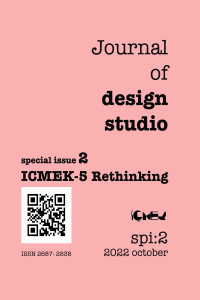Contemporary Mosques Conventional and Innovative Approach in Mosque design at Turkey
Contemporary Mosques Conventional and Innovative Approach in Mosque design at Turkey
___
- As, I. ( 2006). The Digital Mosque: A New Paradigm in Mosque Design. Journal of Architectural Education, 54-66.
- Çelik, E., Kalayci, P. (2014). Public’s Judgment on Contemporary Mosque Design Approaches. Gazi University Journal of Science.
- Creswell. (1926). The evolution of the minaret with special reference to Egypt.
- Fethi, I. (1985.), The Mosque Today, u: Architecture in Continuity [ur. Cantacuzino, S.], Apertu- re: 53-63, New York
- Jahiæ, E. (13. 6. 2008). Stylistic Expressions in the 20 Mosque Architecture.
- Hassan, K. (2008). Contemporary Mosque Architecture.
- Khan, H.U. (1990.), The Architecture of the Mosque, an Overview and Design Directions, u: Expressions of Islam in Buildings [ur. Powel, R.], Concept Media/The Aga Khan Award for Architecture: 109-127, Singapore
- Okuyucu, Ş. E. (2016). Evaluation of Spatial Fictions, Design Concepts, Aesthetic Quests of Traditional, Modern Mosques from Past to Present and the Analysis of Mosque Samples. Civil Engineering and Architecture, 4(2), 54-66.
- Salam, H. (1990). expressions of islam in buildings. proceeding of an international seminar (pp. 109-186). aga khan trust for culture on behalf of aga khan award for architecture.
- Serageldin , I. (1990). Contemporary Expressions of Islam in Buildings: The Religious and the Secular.
- Turan, I. A. (2014). comparison between modern and ottoman architectural designs in turkish mosques and dwellings. folklor.
- Ürey, O. (2013). Transformation of Minarets in Contemporary Mosque Architecture in Turke. International Journal of Science Culture and Sport.
- Yayın Aralığı: Yılda 2 Sayı
- Başlangıç: 2019
- Yayıncı: Orhan HACIHASANOĞLU
Computational approach and morphogenesis
Contemporary Mosques Conventional and Innovative Approach in Mosque design at Turkey
Architectural Design Studio Culture
Obsolete? Relevance of the architect’s role and the changing nature of the architectural profession
Biophilic Design for Bringing Educational Spaces to Life
Architectural Design Products of Students at Istanbul Fine Arts Academy in 1930's
